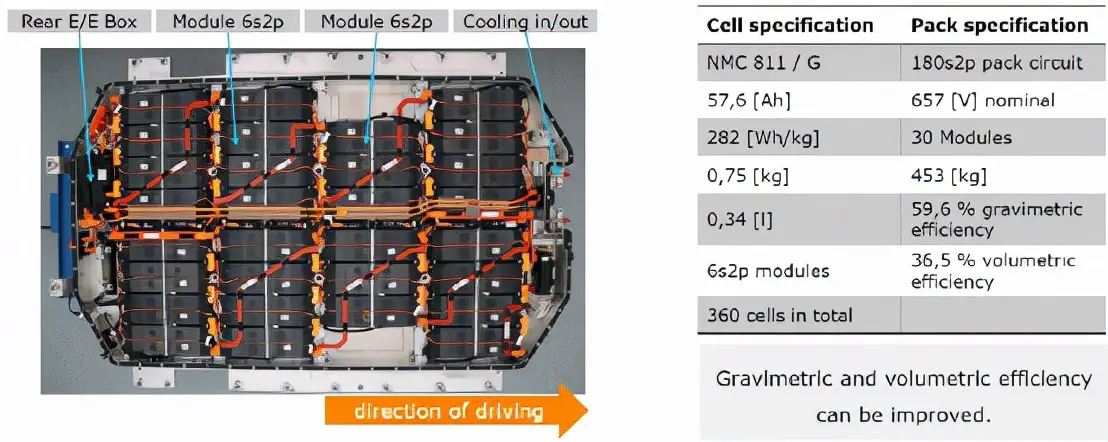The video of disassembling the modern Ioniq 5 battery system at the pack level by Koreans at BASTRO Power Station is very interesting, but it cannot be downloaded. Based on the electrical design, I organize it according to my interpretation. Modern deliberately blackened all the high-voltage copper bars and connecting wires in the promotion process, which looks more beautiful. However, the actual dismantling showed orange cables, which reduced the overall aesthetics of the battery pack.
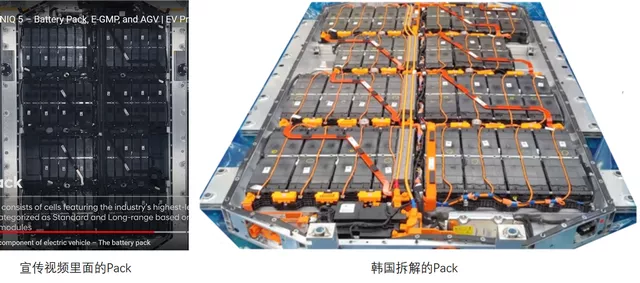
Note: I want to say seriously that the competition for fast charging in China has entered a white-hot stage. That is to say, the roadmap disclosed by companies such as FENGCHAO is most likely the progress table for Chinese companies’ competition around fast-charging battery cells. As electric cars queue up for charging on highways, fast charging can immediately solve the problem and is an important way to show off muscles.
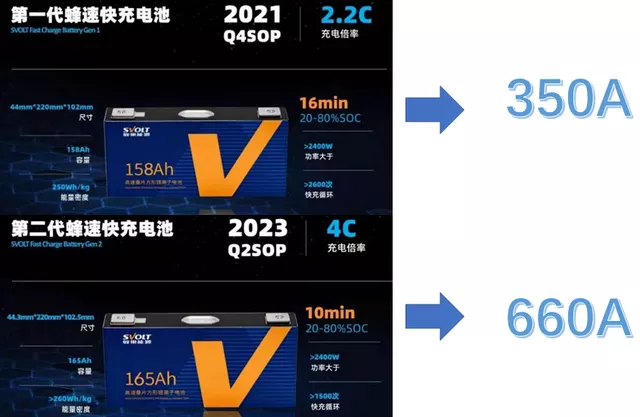
Ioniq 5 Battery Design
We can list the combination methods of the EMP platform. The capacity of a single module is 2.42 kWh. Therefore, there are currently three configurations available:
1) 58kWh, which is a basic configuration version with 24 modules and 288 battery cells.
2) 72.6kWh (450kg, 161Wh/kg), which is a configuration of 30 modules and 360 battery cells.

3) 77.4kWh, which has 384 battery cells.
From the design of the EMP, it still uses a module design concept. From the current design trend, EMP may have a fast switch–from the standard module design to a larger module design.
I think there is an essential question in electric vehicle design, do you need a PDU?
What is PDU? It is actually helping the battery system to branch. If only one BDU is designed to make the battery an output that manages all high-voltage power sources, then you need to branch inside the battery. You need this prerequisite, and PDU always has to exist. Eliminating PDU requires internal wiring costs in the battery system.# Outputting a pair of positive and negative pole high-voltage connectors that connect to the front end to deliver high-voltage connections, one connecting directly to the positive and negative terminals of the battery’s direct voltage end and the other connecting to the low-current high-voltage connection of the auxiliary power end.
Note: Because this car needs to be designed with 400V to 800V, all of the fast charging contactors have been integrated into the electric drive system. Thus, the PDU has been split into two parts: one part handles the battery system and the other part handles the electric drive system.

In this battery pack, PDU is not designed. Therefore, we need to use the front output of the BDU to pull the high-voltage circular wire output to the front end. To secure the wire well, we also used supporting foam. Since 800V voltage is difficult to handle, we adopted the design of a fuse box in the middle (Pyrofuse may be needed to cut off 800V).
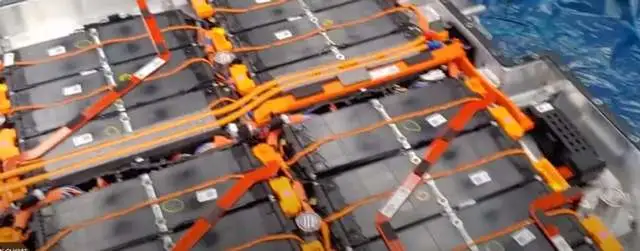
BMS and CMU
In this regard, the approach adopted by Volkswagen is the same. The biggest challenge in designing BMS for 800V is whether it can be centralized. That is, whether the 192-channel sampling channels inside EMP can be centralized for processing. From the existing 800V design solutions:
Taycan adopts a completely distributed approach and tries to complete the sampling within the module.
EMP adopts a semi-distributed approach. The Koreans in the design always separate the temperature and voltage collection and then connect them to the distributed collection CMU in the middle separately.
As shown in the figure below, the least aesthetically pleasing aspect of this package is these voltage cables and temperature cables, which are connected out of the respective modules and then aggregated to the distributed CMU in the middle.

I estimate that the layout of the CMU for the PPE platform will also be similar, and it will be somewhat difficult to put all 800V CMUs together.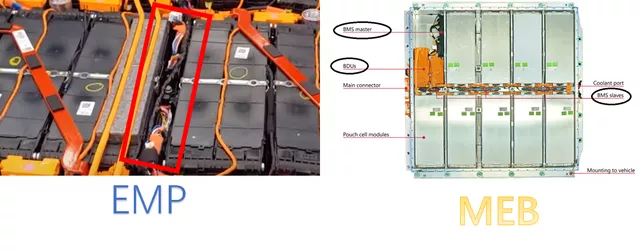
The design of this BMU also follows the mode of high and low voltage separation. It is highly probable that the circuit for high voltage collection is integrated in the aforementioned BDU. This is the reason why the BMU can be made so small without any orange high voltage input wire visible from the outside.
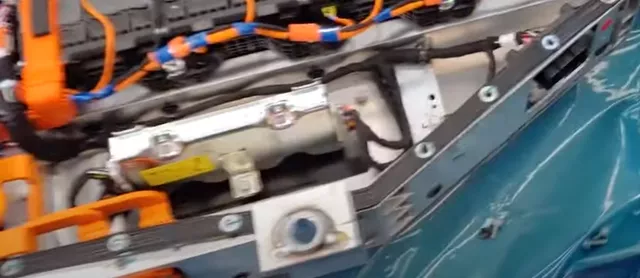
Summary: Although the design of the 800V battery system may appear simple, it is actually quite complex when scaled from 2C to 4C, with high voltage and high current involved. There are still many areas that need to be optimized. Currently, all domestic high-end brands are working on the design, moving vertically from 2C to 4C. This is an extreme arms race! You can play, I’ll just watch.
This article is a translation by ChatGPT of a Chinese report from 42HOW. If you have any questions about it, please email bd@42how.com.
